Why Do Corgis Sploot? The Corgi Sploot WARNING
Corgis are one of the most popular dog breeds on social media. This is partly thanks to this dog breed being mostly associated with the funny and adorable behavior known as splooting.
You have probably seen this lying down position with the cute Corgi butt on social media already a thousand times, and nobody is more familiar with it than Corgi owners. But what exactly is a sploot and why do Corgis sploot at all?
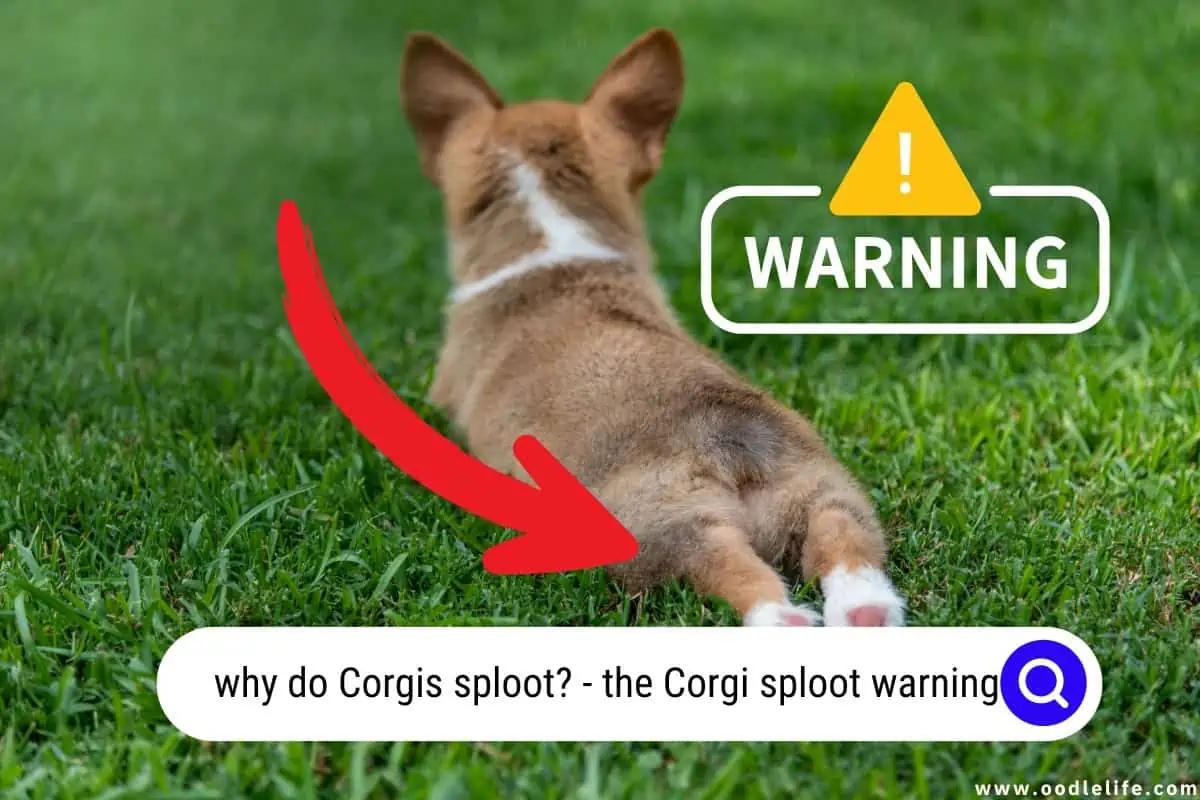
In this article, we’ll dive into the infamous Corgi sploot and explain to you whether or not there is cause for concern if your dog happens to portray similar behavior when lying down.
What is a Sploot?
In case you are unfamiliar with this position, a sploot is when your dog, usually a Corgi, lies down on its stomach with its back legs stretched away from its body. This can either be done with one leg or both legs at the same time.
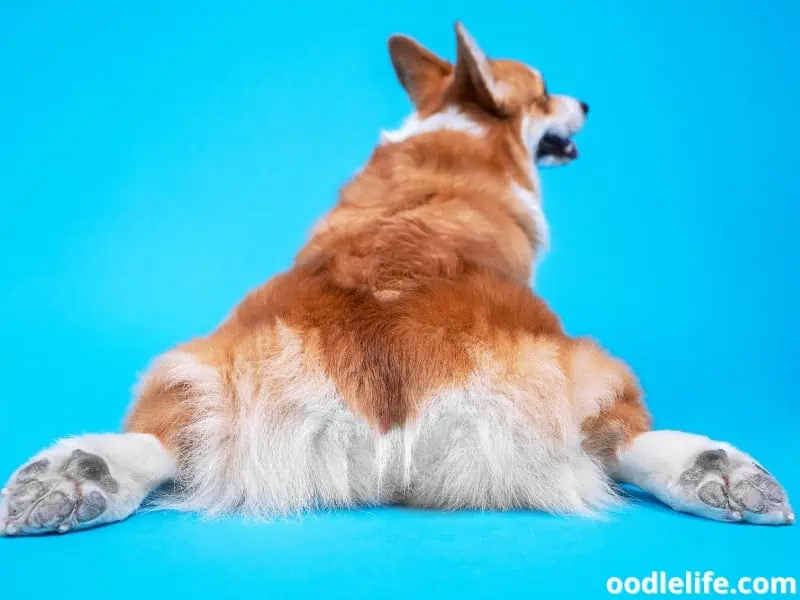
Some owners might compare the look of this pose to frog legs being stretched out, which is also why this pose is often called “frog dogging” or “dog frogging.” Personally, I like to say my Dachshund & Jack Russell mix is doing the “spatchcock chicken pose.”
Some dog breeds also tend to sploot with their legs stretched out to the side, which is called a side sploot, and looks even more like a frog with a hairy butt and a wagging tail.
This both funny and slightly strange position is used by several dog breeds and not just Corgis. Although, because it is especially practiced by the Pembroke Welsh Corgi as well as the Cardigan Welsh Corgi, it is also coined as a Corgi sploot.
Younger dogs in particular will portray this behavior more often, but you can even watch your grown-up dogs splooting happily from time to time. Even cats sploot!
Different Variations of the Sploot
There is more than one way to sploot for your dog. Here are a few examples:
Half Sploot
This is when your dog only sploots with one hind leg instead of both, while the other leg remains underneath the body.
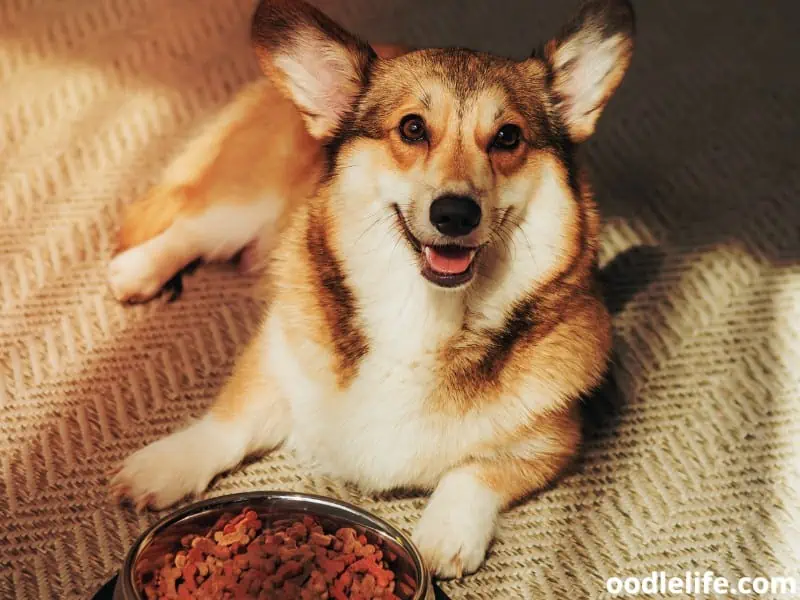
The half sploot is most commonly used to stretch and most dog breeds won’t fall asleep in this position.
Full Sploot
This can be observed with Corgis but also with other dog breeds and cats! A full sploot is also known as a “Pancake Sploot” and happens when your dog lies down with both their front and back legs outstretched, basically like a flat pancake.
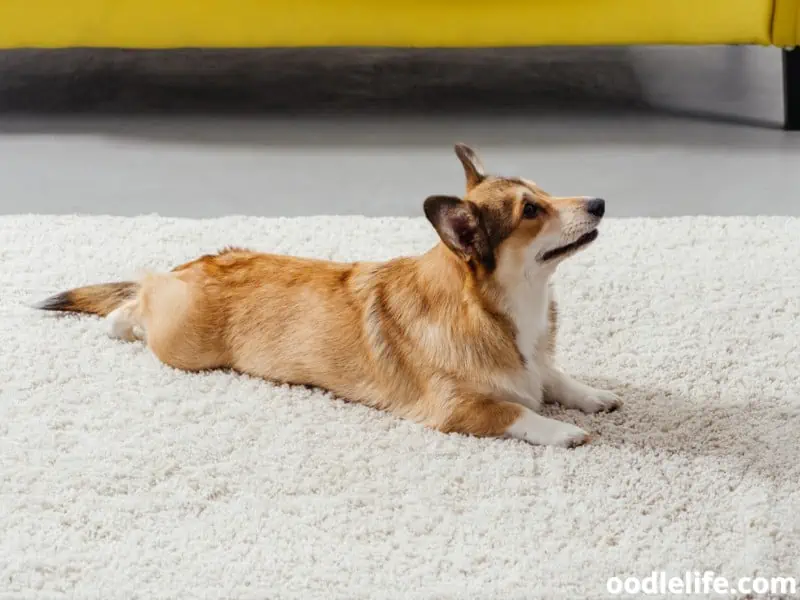
Reverse Sploot
If your dog just suddenly flops over on its back to stretch its hind legs out, then this is also totally normal but probably won’t last as long as the normal Corgi sploot.
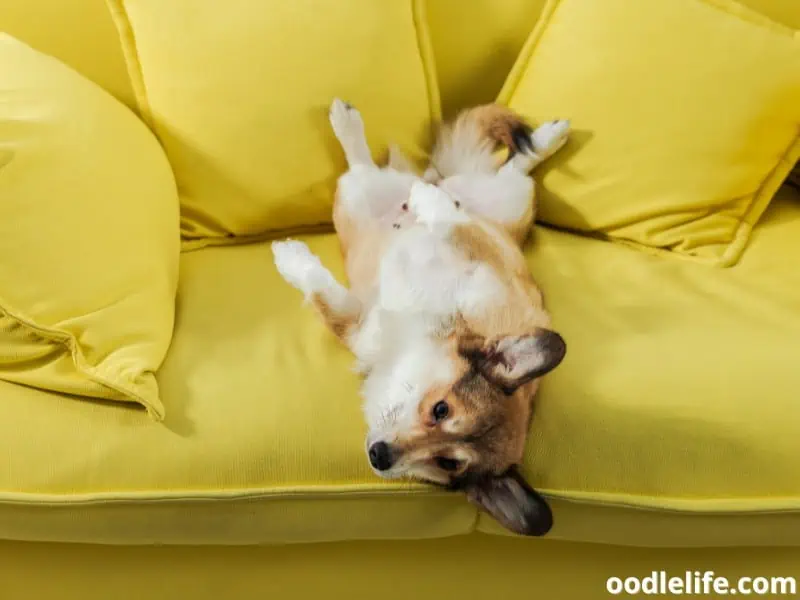
The reverse sploot is also known as an upside-down sploot.
Why Some Breeds Sploot?
While we’ve established that as the name Corgi sploot already suggests, this is a behavior mainly expressed by Corgis, they aren’t the only dogs that do a dog sploot.
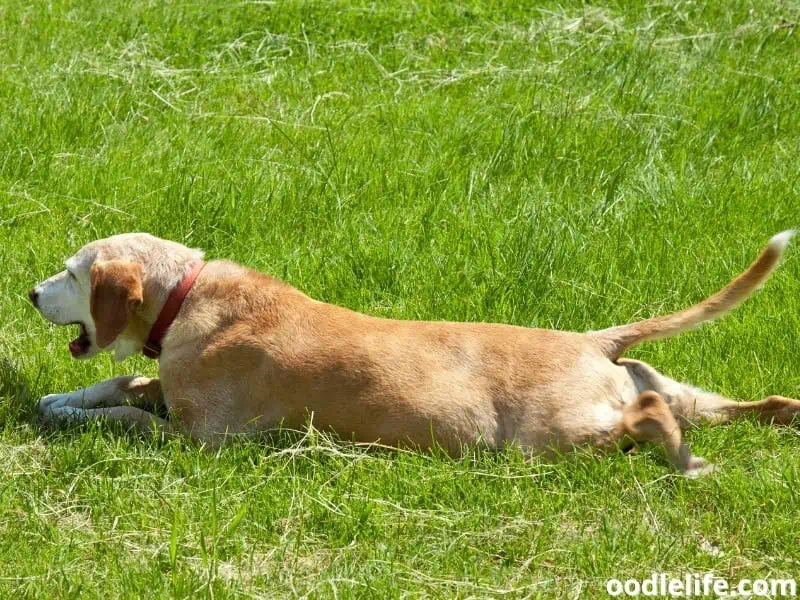
There are also other dog breeds that perform sploots, namely:
- German Shepherds
- Dachshunds
- French and English Bulldogs
- Poodles
- Pitbull Terriers
- Labrador Retrievers.
Not all dogs sploot because some breeds don’t have the bone structure that supports this way of your dog lying with its hind legs flat on the floor.
Most dogs will remain in this position while they are sleeping or relaxing for quite a prolonged period. Other dog breeds might just practice a Corgi sploot when stretching their hind legs.
The reasons why dogs sploot can be varied. The easiest answer, however, is that it’s just a matter of comfort and enjoyment when lying in this position.
As we’ve just mentioned, they might just be stretching out their hind legs after a walk or run. By stretching out their hip flexors like that, they can also prevent themselves from falling victim to hip dysplasia later on in their life. Basically, they are doing their own cute form of canine yoga!
Another reason why your dog is in a sploot position is so that its belly is lying flat on the ground in order to be in the optimal position to cool down. Dogs often sploot on bare floors to help cool themselves down.
Corgi splooting might also just happen because the dog wants to get the attention of its dog owners. As their butts and hips are some of their favorite places to be scratched, they might be hoping to get a little PDA from their owners by performing this adorable position.
When You Should be Concerned?
There is very little reason for concern if your dogs sploot. As we’ve covered in this article, it’s a very common behavior, especially with Corgis but also with other dogs.
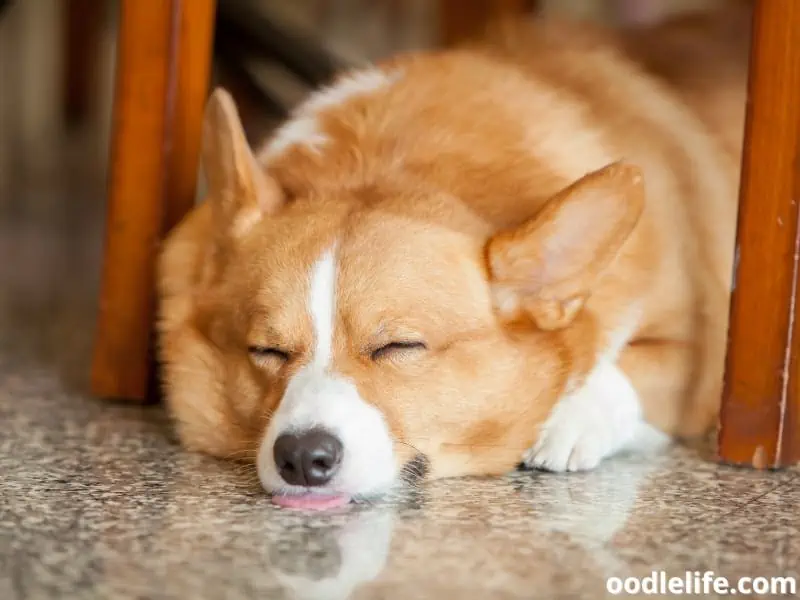
If anything, your dog’s splooting means that they have good movement in their hips and probably don’t suffer from the all too common and dreadful hip dysplasia.
With that being said, you should be concerned if your dog who usually sploots all of a sudden stops doing it completely. This might indicate that they feel some discomfort or are experiencing pain in their legs or hips. If this is the case, it’s best to take your pooch to the vet.
On the other hand, if your dog has never splooted before in its life and is now suddenly doing this out of the blue, you should also have it checked out.
In particular, adult dogs may start splooting because of pain in their hips or joints and other ailments which might prevent them from lying down comfortably.
Check if your dog is limping in any way or weirdly swaying its hips when walking. Another thing to check out is whether your dog’s body has any form of swelling or wounds that might make it lie down with one leg or both legs stretched out like that.
If your dog is lying down with its hind legs stretched out and pulling itself forward using its front legs, then this also might be a sign of a rash or some form of itch on its belly. Through dragging their belly over the ground, they might be trying to scratch the itch away.
Check if your dog’s belly or inner thighs are showing any signs of rashes. This can be small pustules or just its skin is more red than usual.
If you are worried about your dog’s behavior, it’s probably best to connect with a veterinarian.
FAQs
Here is some further information on why Corgis sploot!
My Corgi doesn’t sploot – is there a problem?
As mentioned, not all dog breeds sploot and sometimes even Corgis won’t. There is technically nothing wrong with your Corgi not splooting if it has never done it, not even as a Corgi puppy.
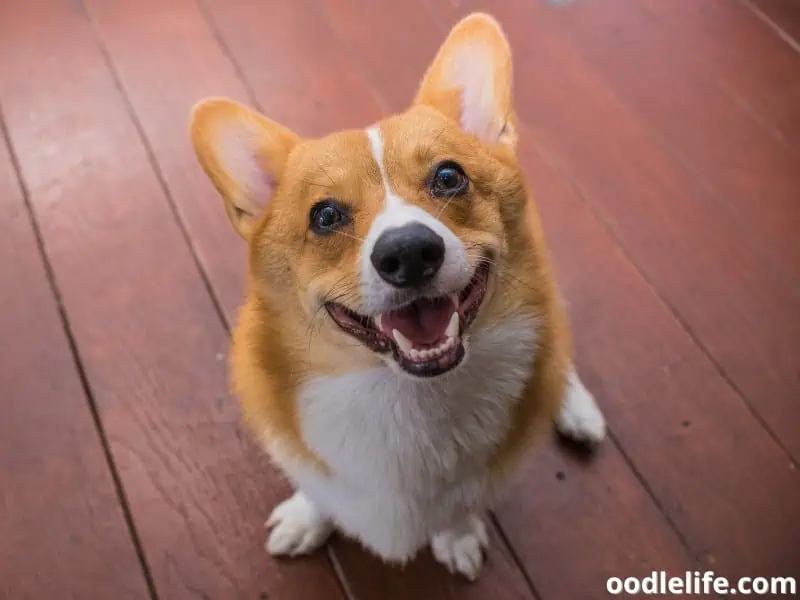
It’s also important to note that while it is incredibly adorable and will get you lots of likes on social media, you should never make your Corgis sploot, nor any other breeds for that matter. Forcing a dog to sploot can seriously harm or injure your dog – no cute photo is worth that!
Do any other animals sploot?
Yes! As we briefly mentioned, cats also sploot. But they aren’t the only other animals that will use the Corgi sploot for their comfort and for stretching out their back legs.
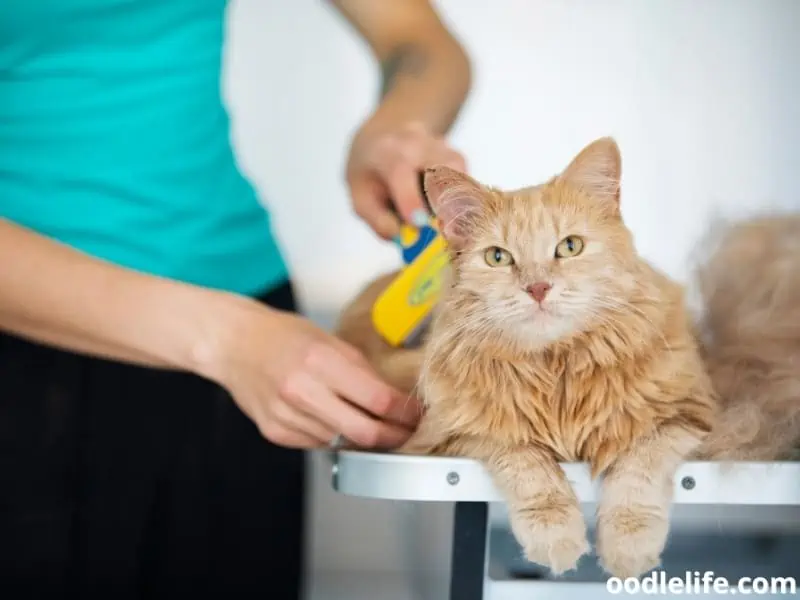
Here’s a list of all animals that perform a Corgi sploot:
- Leopard Gecko
- Cats
- Turtles
- Polar bears
- Rabbits
- Squirrels
- Hedgehogs
- Chipmunks.
Final Thoughts
Ultimately, there is no 100% scientific reason to the question of why Corgis sploot. They might simply enjoy this position, and since they aren’t the only breed or animal to lie down in this position, this might be the best answer as well.
What we can definitely agree on, however, is that it doesn’t matter so much why your Corgi sploots, but more that it looks absolutely adorable and has gained virality on the likes of Instagram in no time. Simply check out the hashtag #splooting and you will find yourself scrolling and “aaahw”-ing for hours on end.
Last but not least, if you have any doubts or reasons to worry about how your dog lays down, it is always recommended to contact your vet and have your pooch thoroughly checked out – better to be safe than sorry!